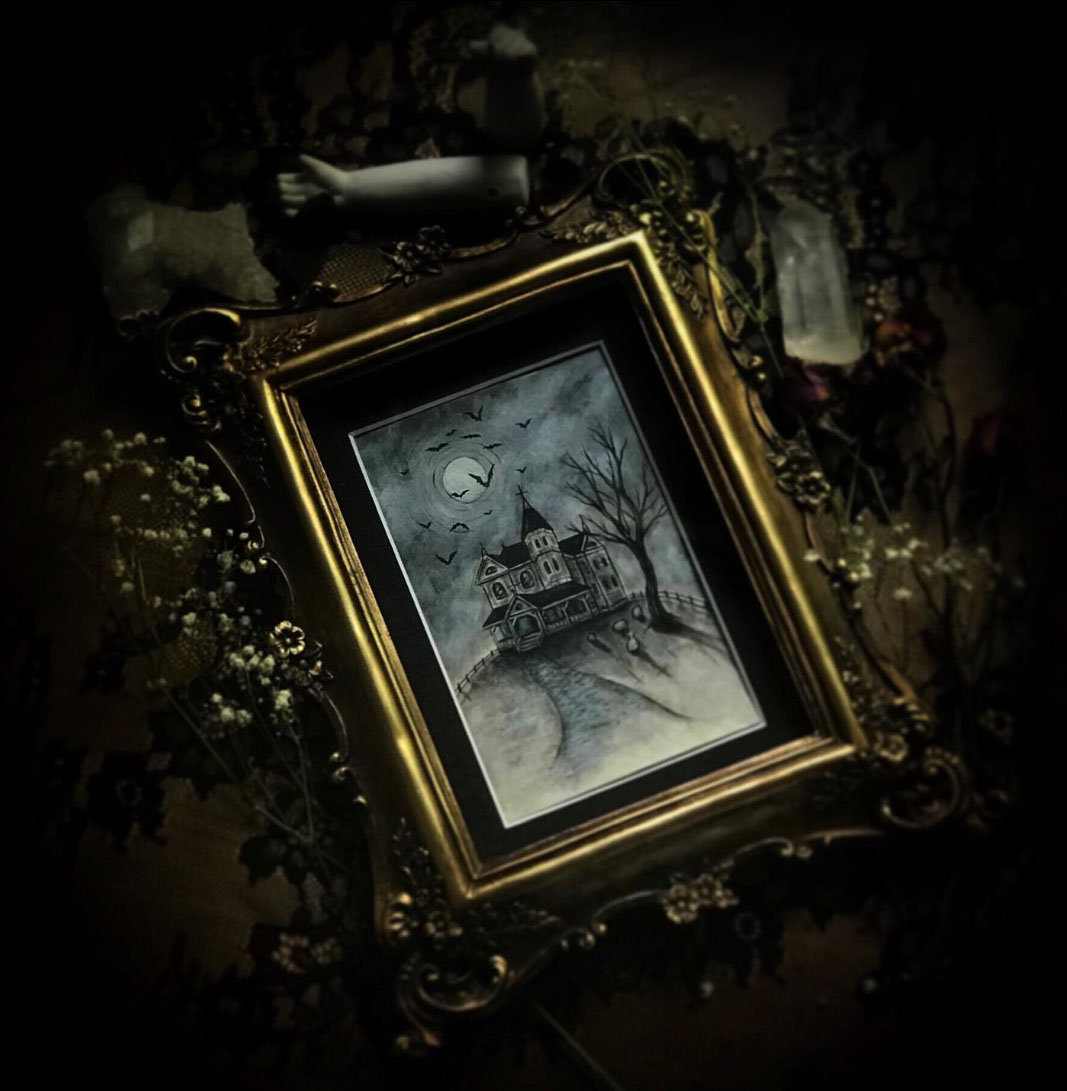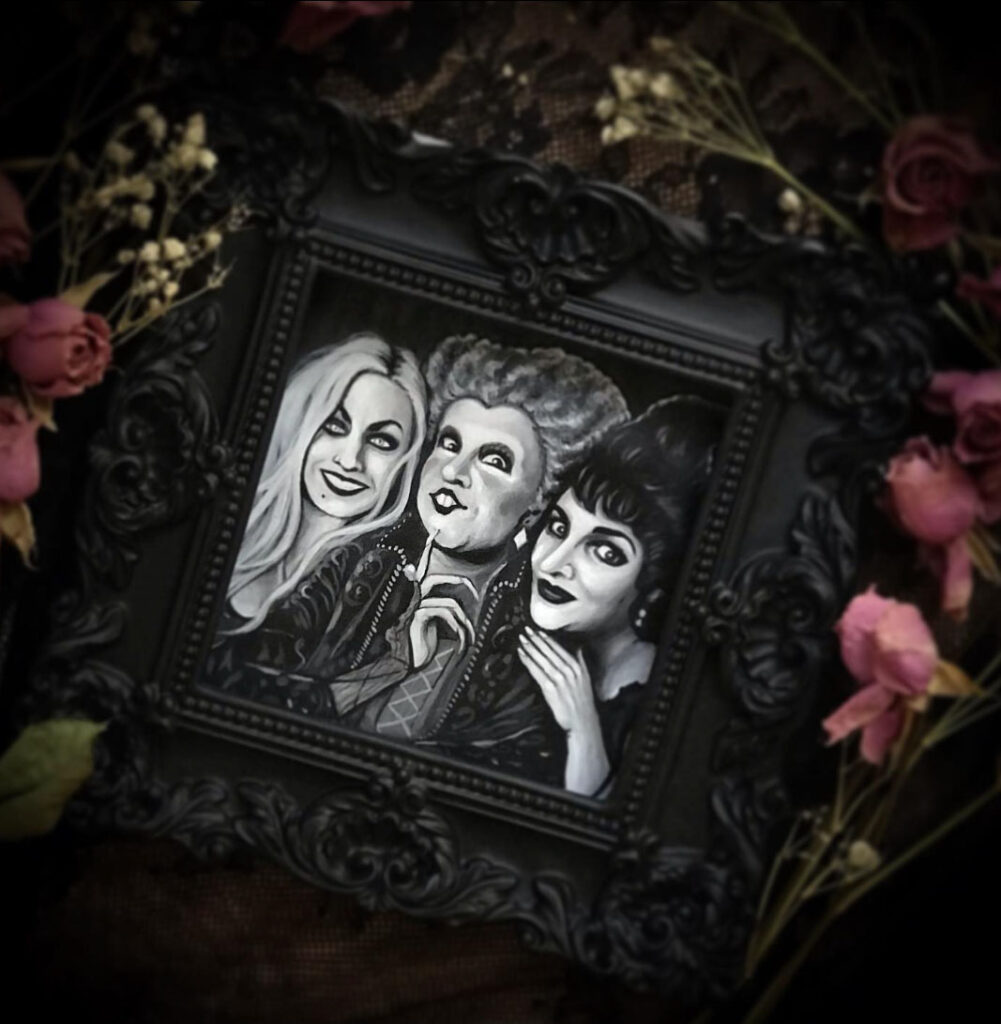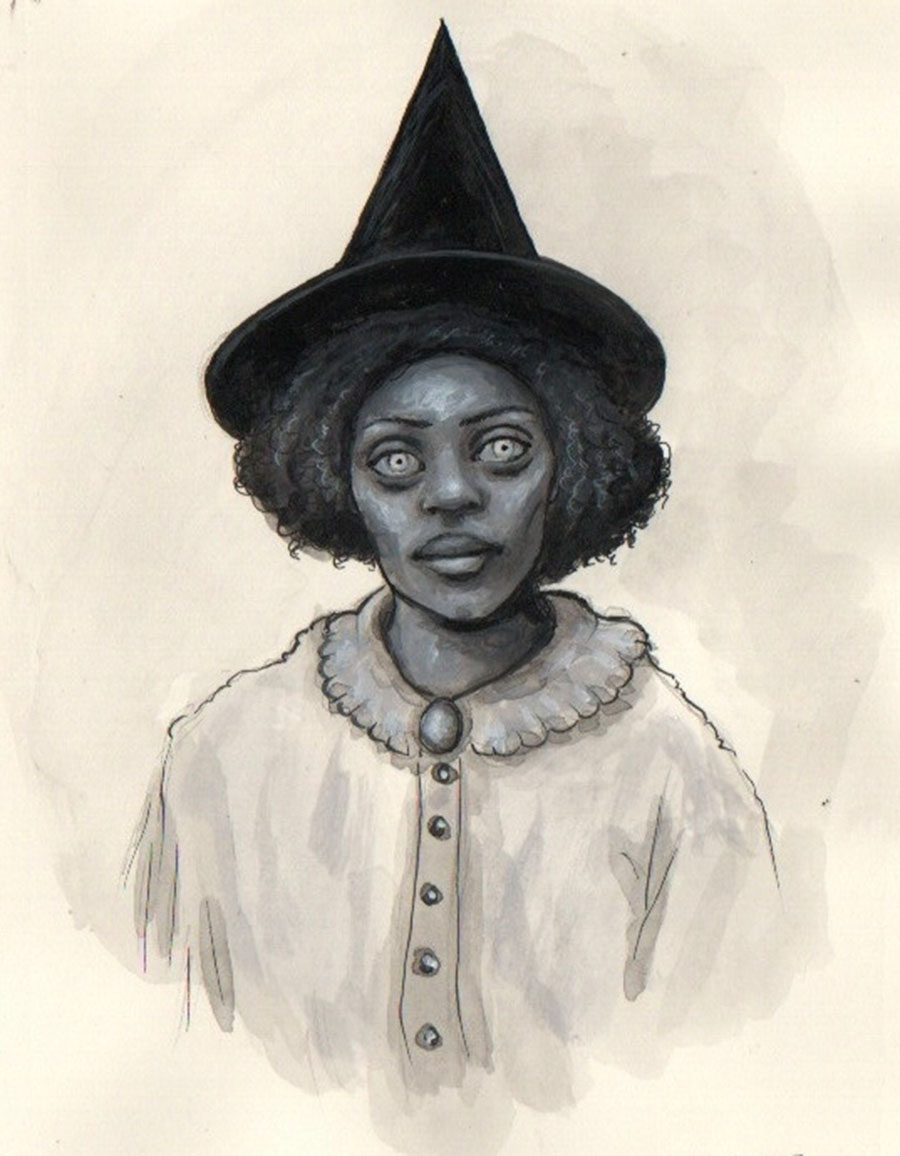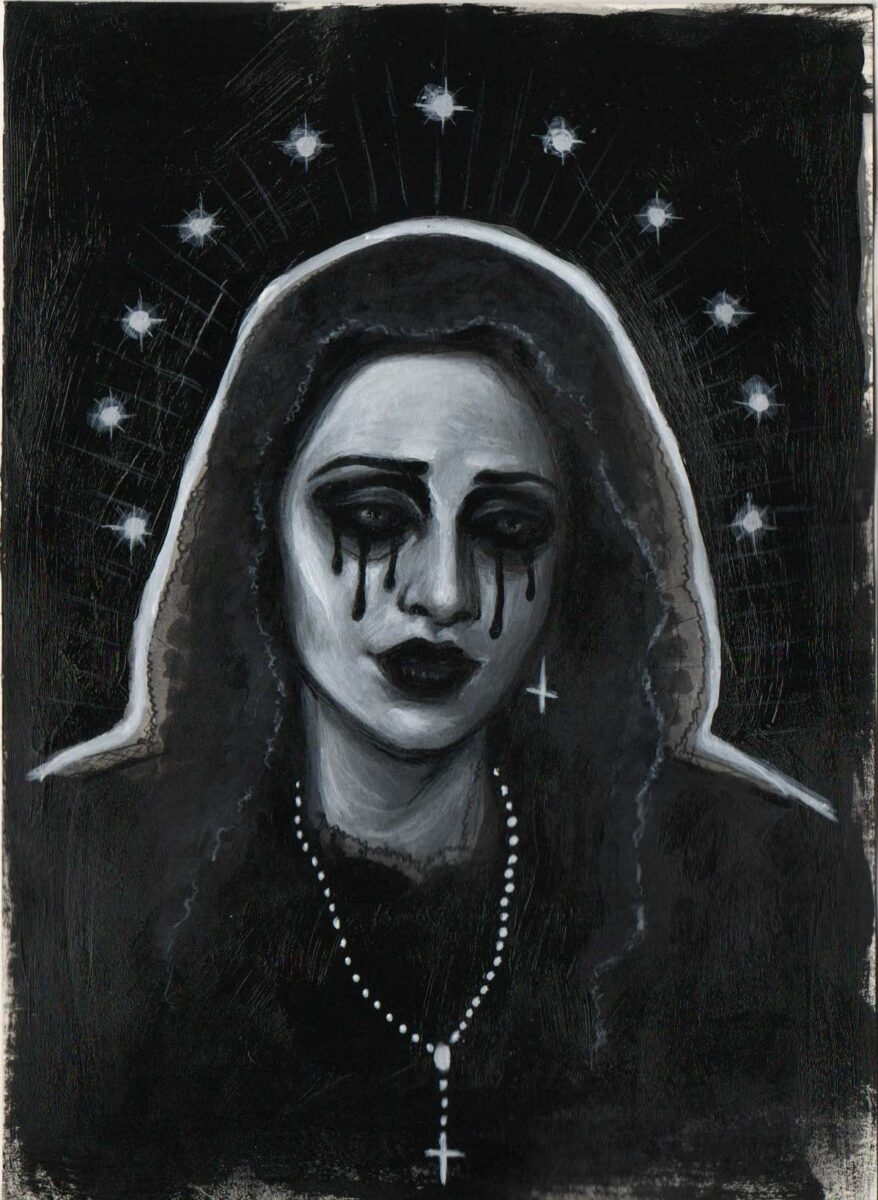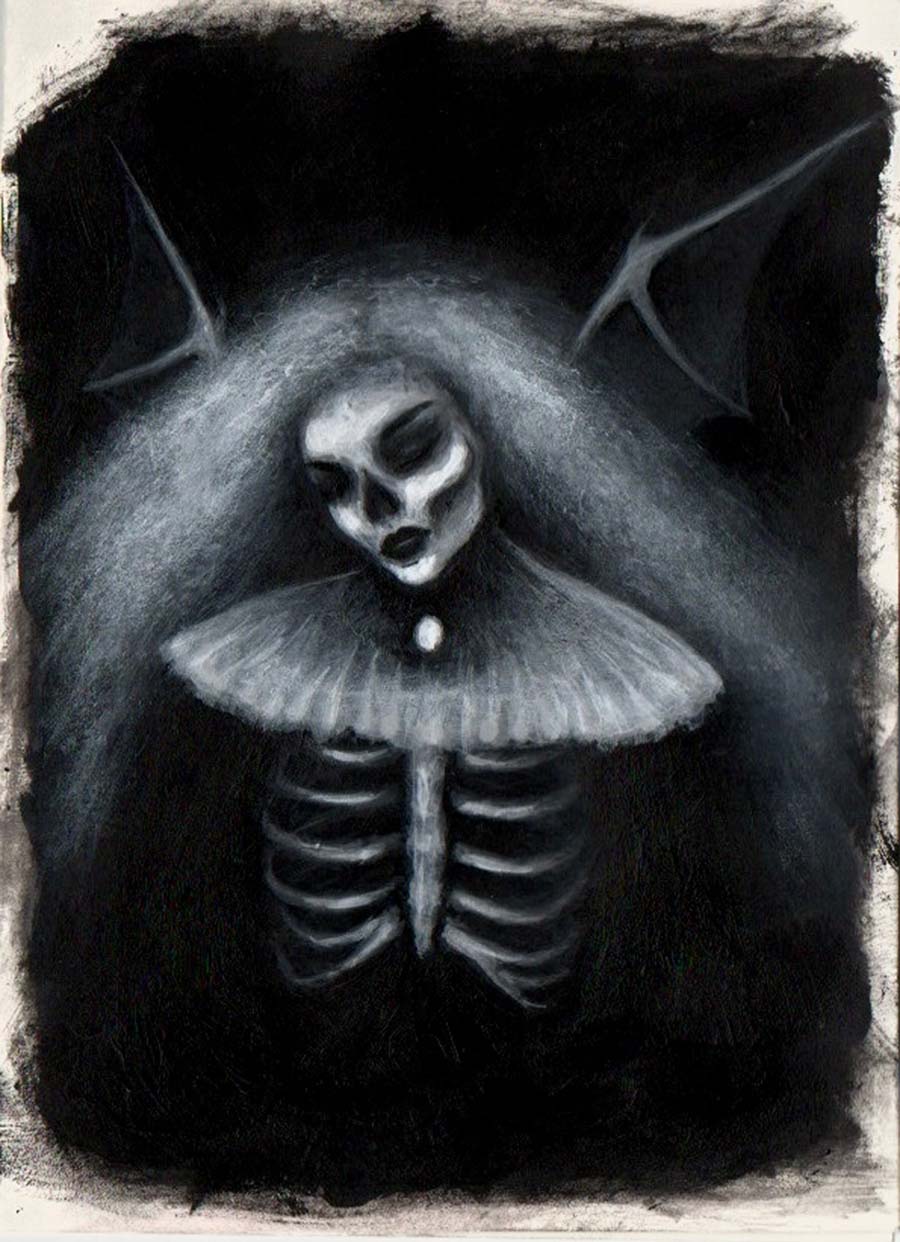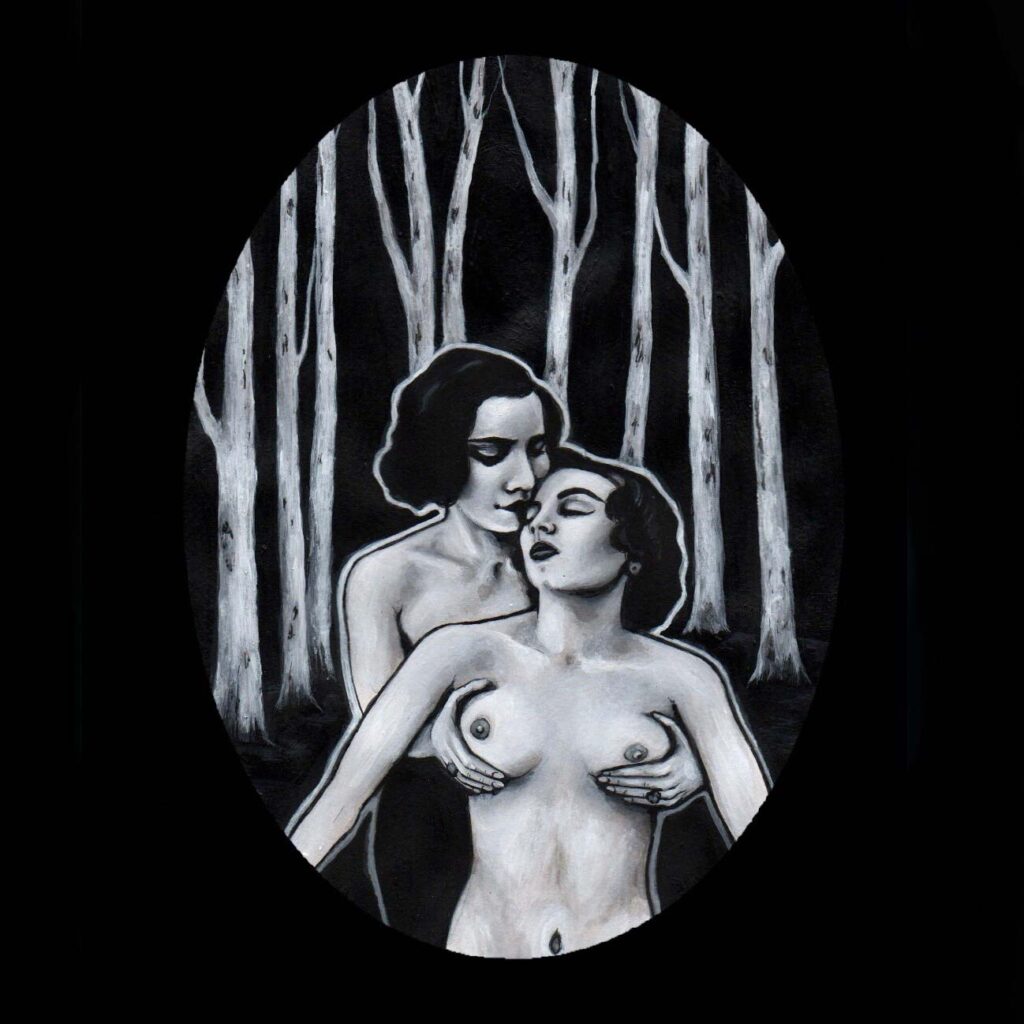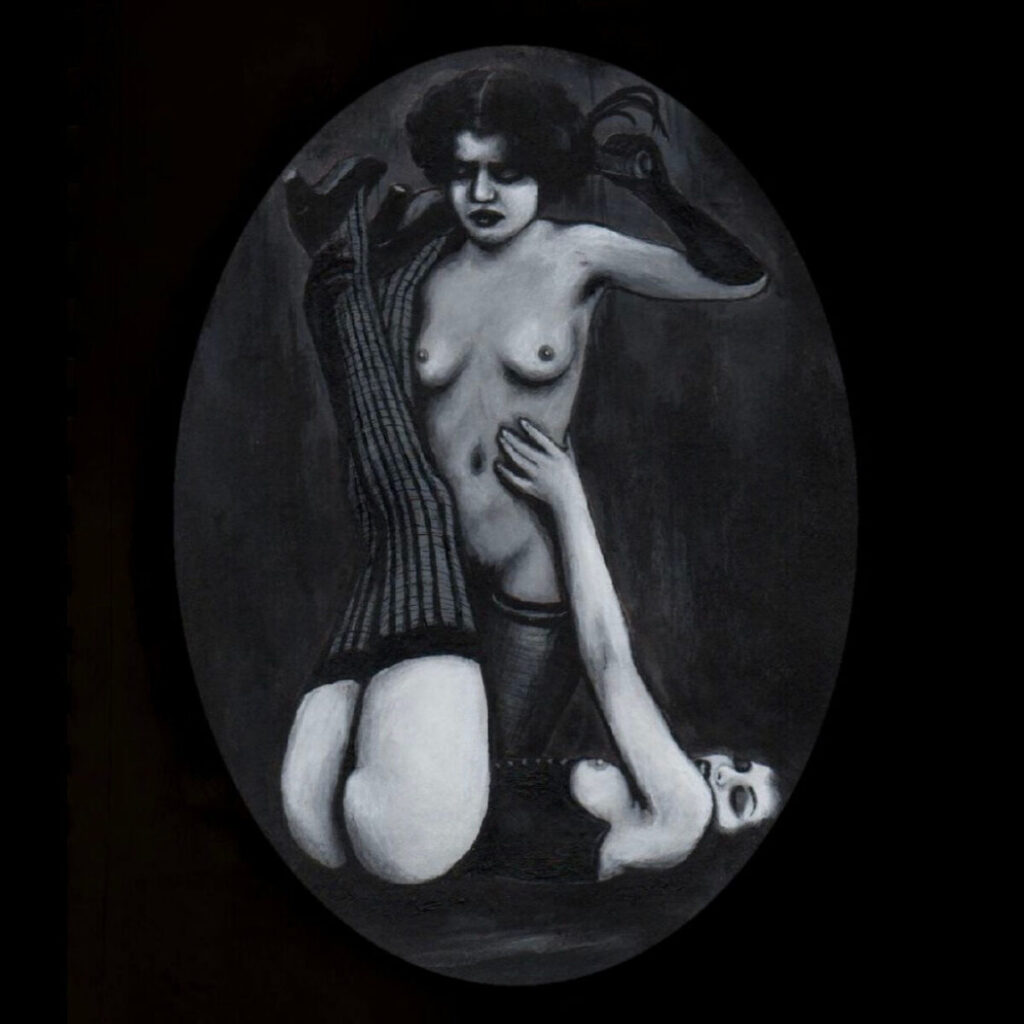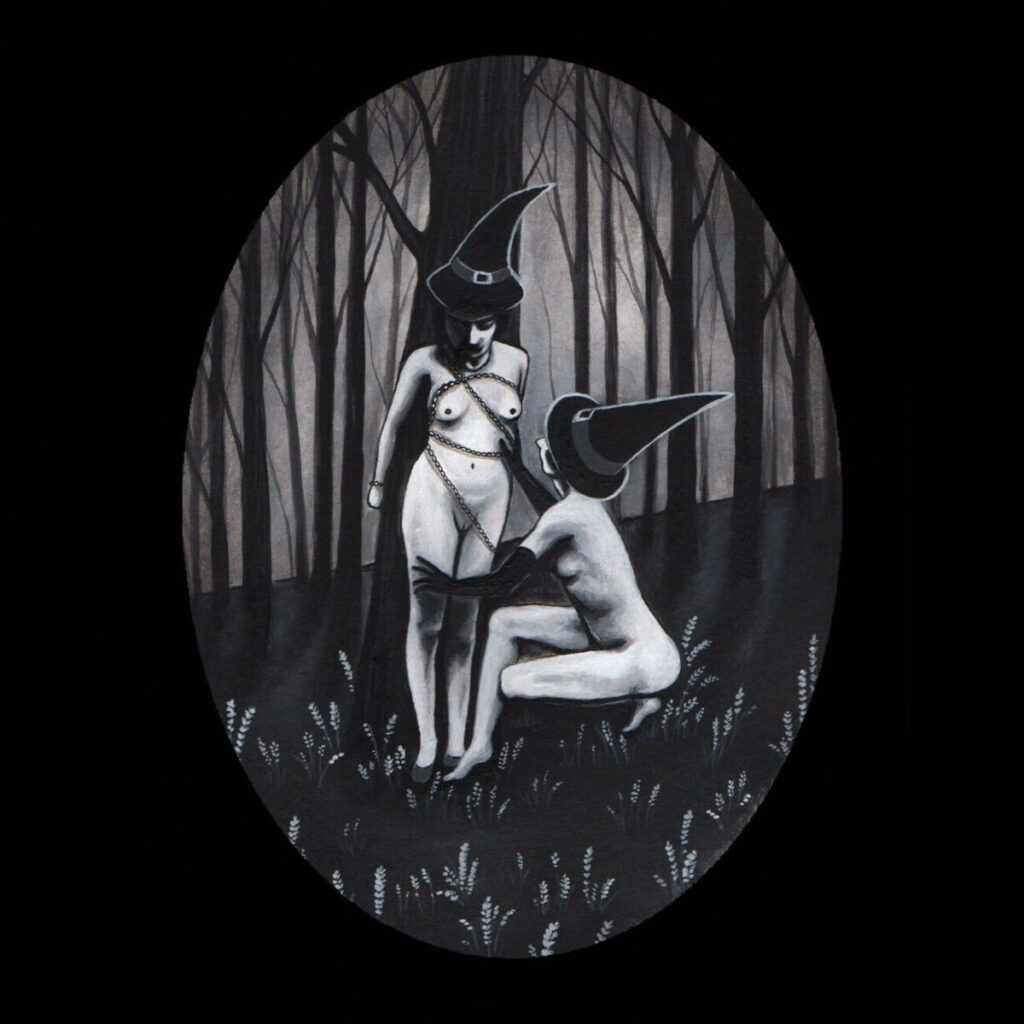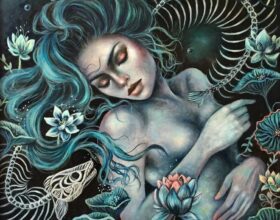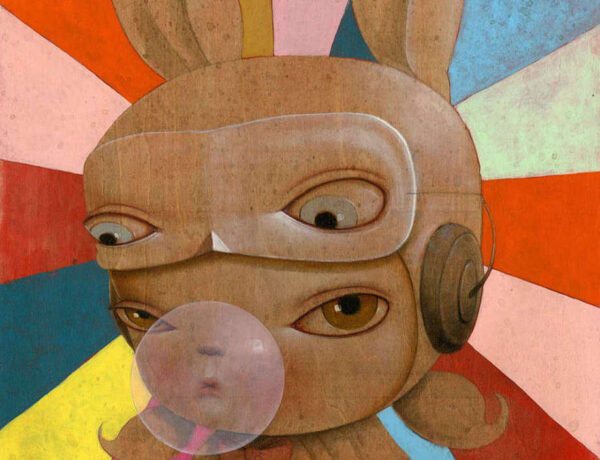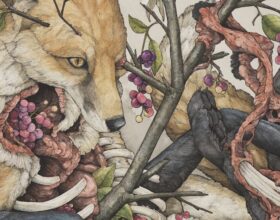The intriguingly defiant and witchy works of Cai Vega aren’t just beautiful paintings, they’re a proclamation centering queer kink in the cultural narrative. From a young age, Vega found an escape through art. Creating became a refuge from the chaos of an abusive home and the heteronormativity which pushed them to the fringes of mainstream culture. In the realms Vega paints, bold gothic symbolism dares viewers to consider fantasies traditionally considered taboo. The timeless duality of black and white gives Cai Vega’s characters an ethereal, otherworldly presence. Their personalities shine boldly from the antique and vintage frames which often inspire the pieces those frames enshroud.
The richly layered woodlands Vega’s characters inhabit serve as the backdrop for scenes of intimacy which defy the traditional narrative of what love looks like and the boundaries of pleasure. Vega’s witches represent the parallels among historic views of practicers of witchcraft, kink, and queer people—all viewed as deviant through varied cultural lenses and across time. With their macabre, visionary art, Cai Vega is taking back that narrative and telling the story of the world they know; a story in which queer romance and kink are not the outliers on the fringes, but rather, the protagonists.
Find out how Cai Vega is using their art to push the boundaries and center queer themes and kink in the cultural narrative in this exclusive interview.
How did you get started as a fine artist? What is your personal background?
This question is hard for me to answer. I had a rough childhood, the environment was violent and abusive. Art, especially painting, became a means of escape, a place of solace from the chaos. I wish I could say that my background was a series of learned experiences in art school, or a residency spent abroad, but that was far from my experience. It has only been in the past 10 years that my life has become stable enough for me to start sharing my artwork.
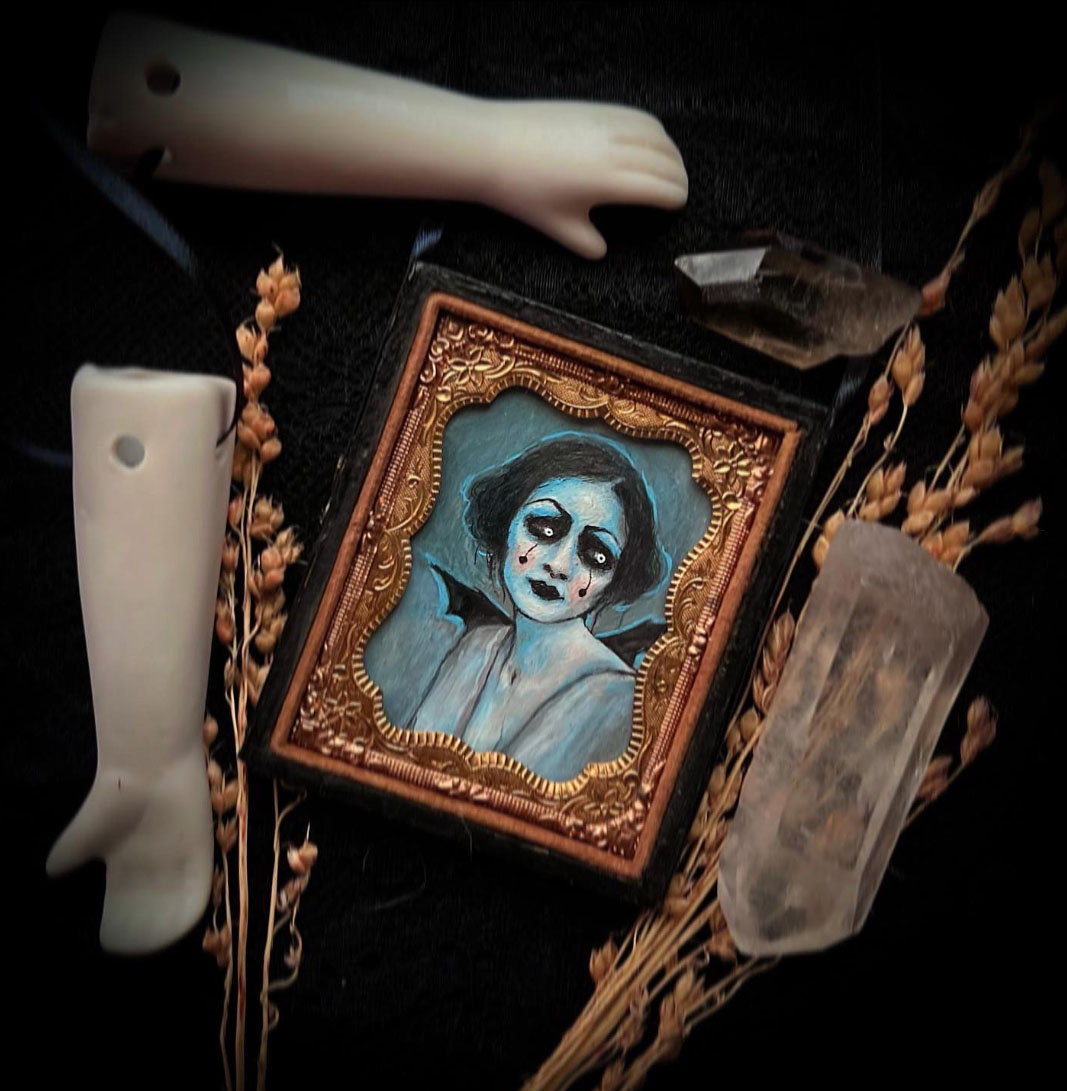
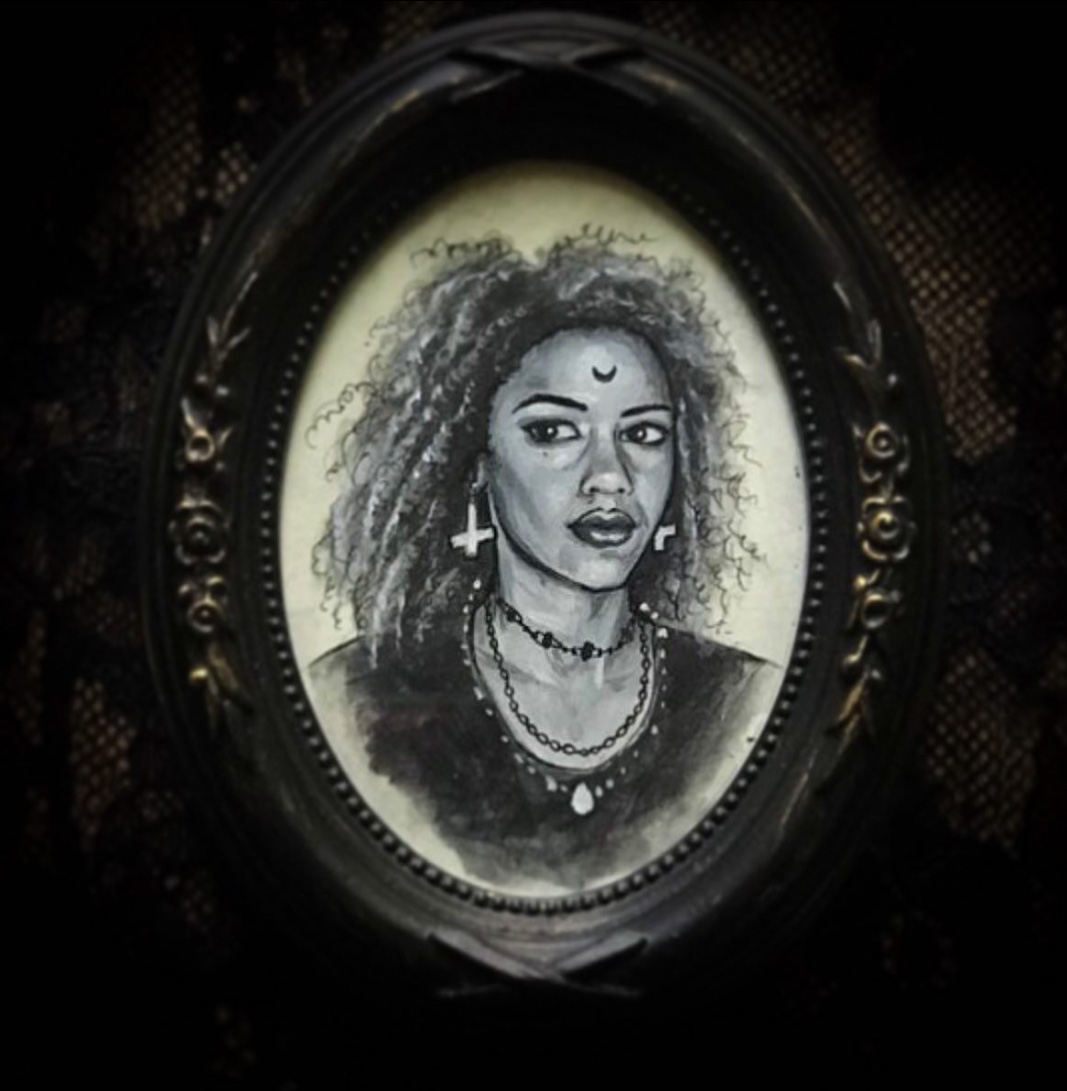
Your work focuses on dark elements, fantasy, and lesbian erotica—what is it about these elements which inspire you?
BDSM has a long history in the lesbian/queer community. We are a subculture within a subculture, deviant outcasts of society, gender rebels. Heteronormativity aims to dictate how we should live our lives, and how we are expected to define “normal” sex. In response we have formed our own safe spaces within the subculture, building community that exists outside the realms of shame and normativity. For example, the dark fantasy aesthetic in my lesbian erotic series is meant to highlight connections and parallels that both witches and kink lesbians have been deemed deviant and degenerate in society and throughout history. With all of this in mind, I was inspired to paint empowering depictions of lesbian erotica to subvert society’s continued demonization of our existence and to step outside the male gaze.
With all of this in mind, I was inspired to paint empowering depictions of lesbian erotica to subvert society’s continued demonization of our existence and to step outside the male gaze.
What is your process for crafting a piece from start to finish?
I begin a painting by sketching the figures and background in pencil. Typically, I water down acrylic paint, layering in watery shadows, and then gradually integrating thicker layers of lighter tones to create depth and detail. I fuck up a lot, so often the finished painting does not look like the initial sketch. A lot of trial and error goes into every piece.
What is the most challenging part of working in your chosen medium?
What I find most challenging is having limited knowledge on techniques when painting certain subjects. I often feel trapped in my limitations, and frustrated with the process of teaching myself.
Your paintings are primarily done in grayscale black and white. What inspires you to work with that colour palette?
I paint in black and white because I love the otherworldly, ethereal mood that working in these tones bring to the paintings.

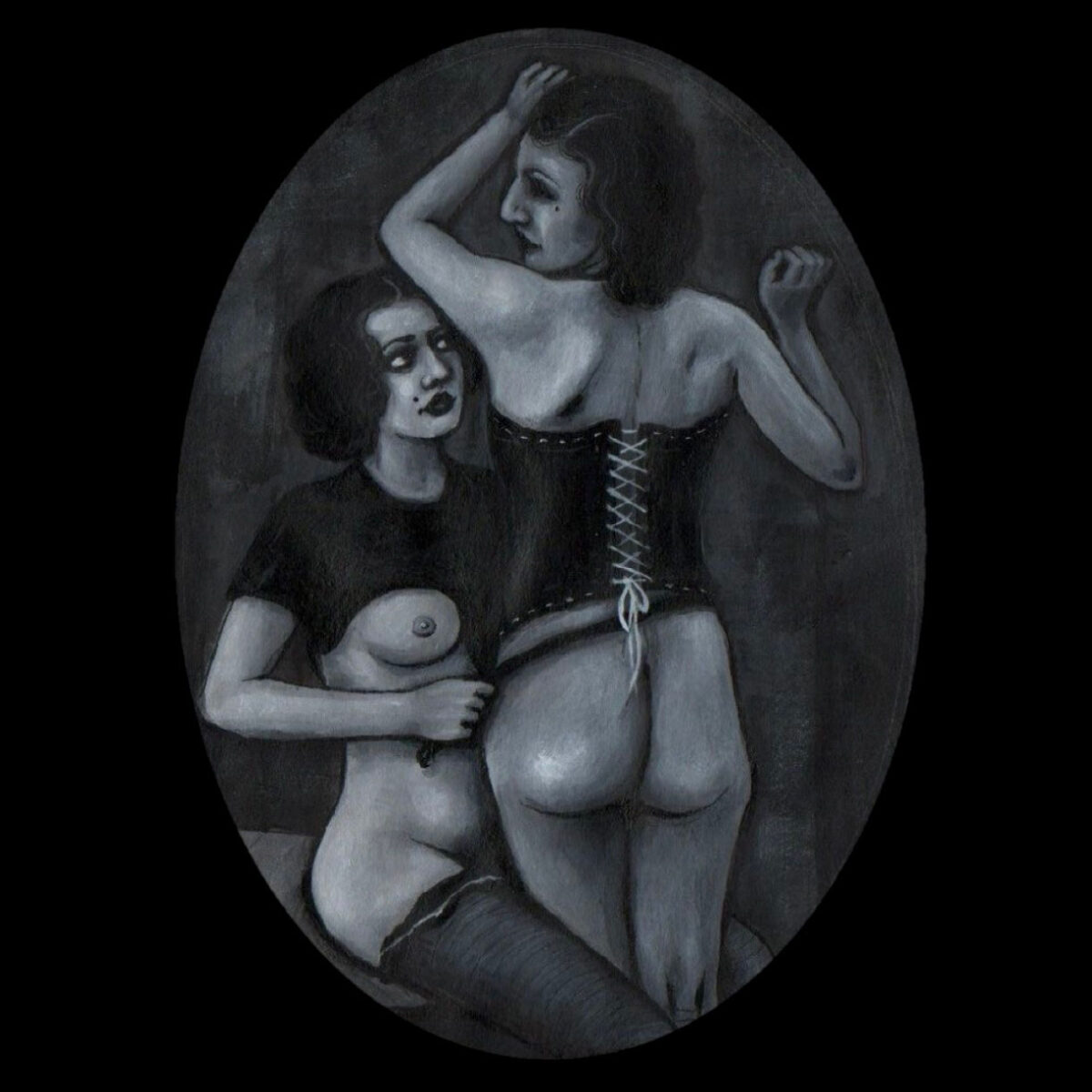
Can you tell me about a piece which held special significance for you? What about it made that piece unique?
“The Void” because of its relation to my inner world, particularly with my mental health. The painting is meant to mirror this pervasive void that living with a mental health condition can cause. The longing to escape the binds of loneliness and isolation are symbolized by the bat wings. My hope is that the viewer will have an interpretation and meaning that is personal to them.
You create portraits full of life and expression on minute canvases – most of your pieces are as small as a photograph from a film camera. What draws you to working in miniature?
I adore tiny vintage frames. I love the almost keepsake like feeling of miniature frames. The motivation to paint on such a small scale is usually tied to the actual frames themselves.
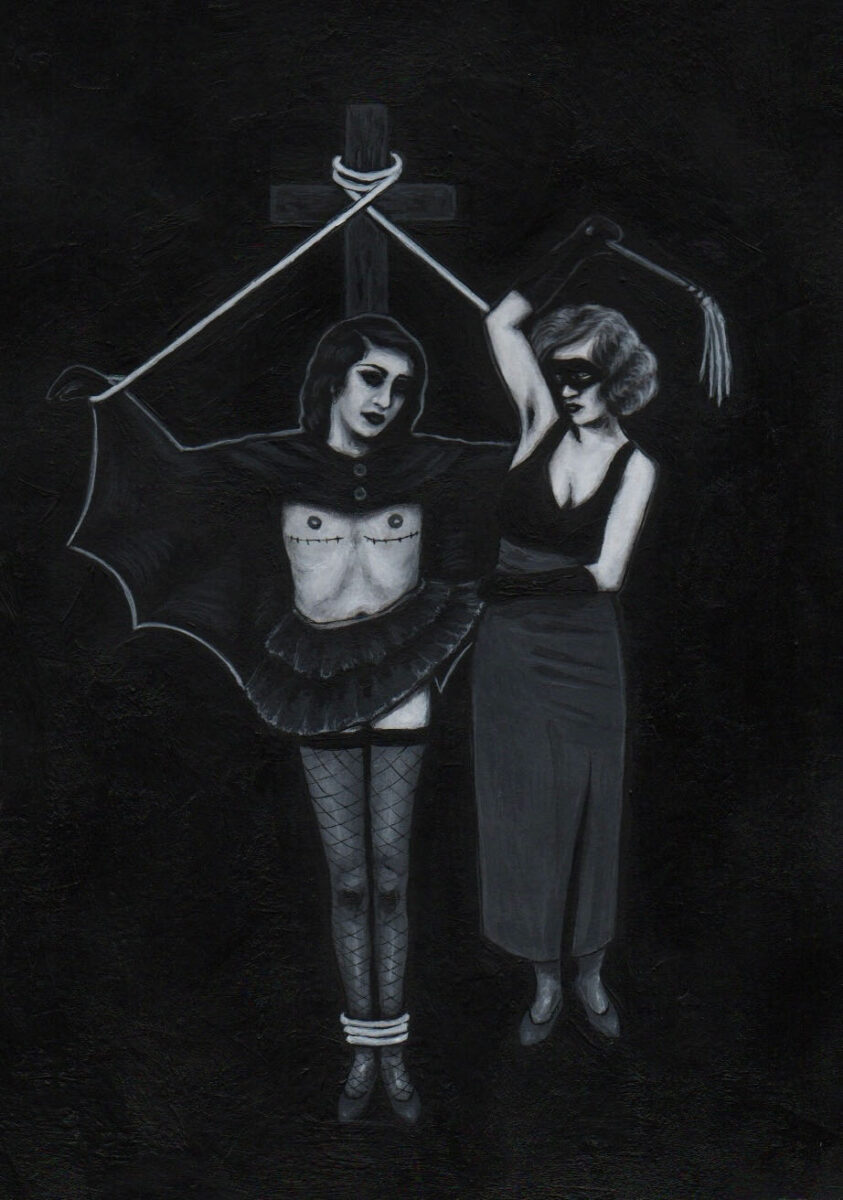
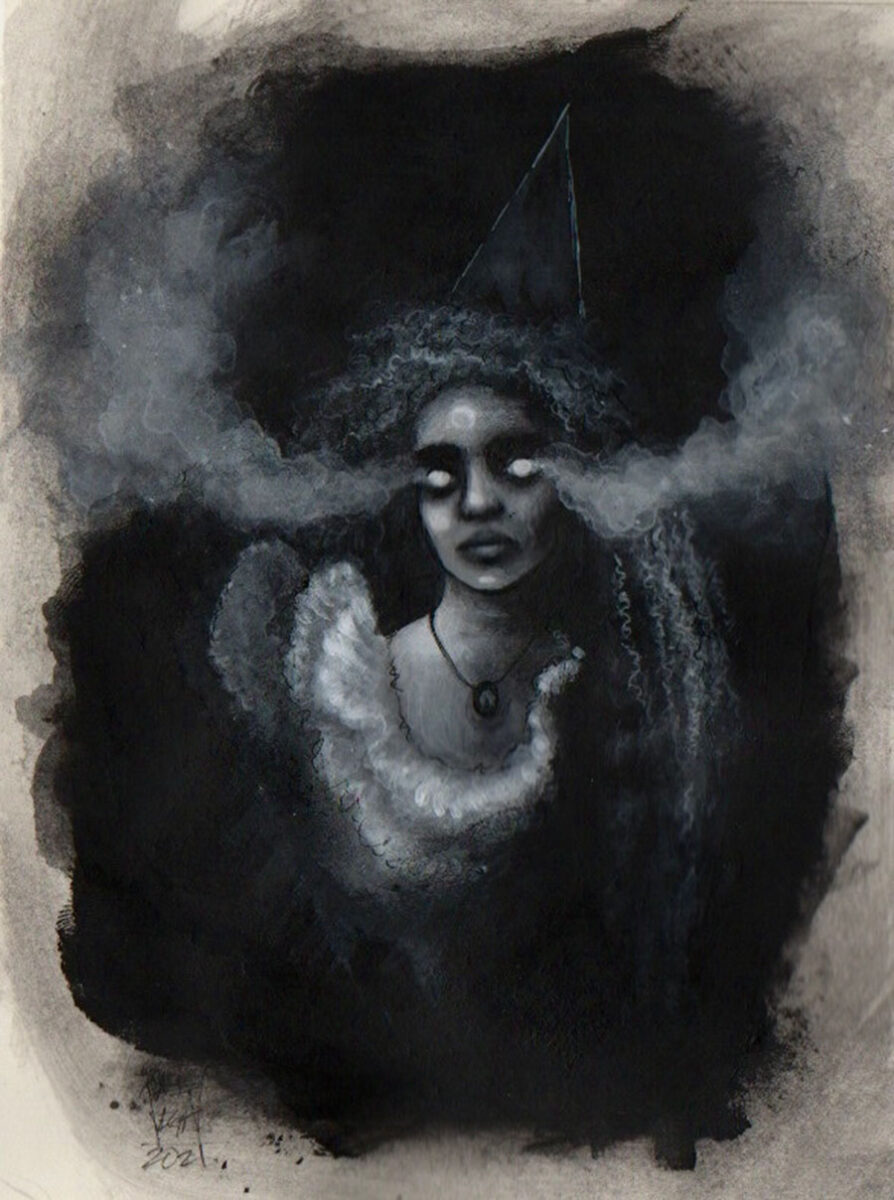
I have to say, my personal favourites among your work are your forest witches engaged in *ahem* very intimate scenes. What inspires those pieces? What do you hope they will represent for viewers?
In the mainstream art world, queer artists and queer art is grossly underrepresented. Many mainstream art pieces depicting us are from the perspective of the male gaze, and from far too many cis heterosexual male artists. My hope is for lesbian and queer artists to have a regular presence in the mainstream art world that is not just carved out in a small corner of the room, but showcased and highlighted.
It’s no secret that Instagram can be a challenging medium for erotic art. How do you navigate the line between being true to your artistic vision and connecting with your audience through that platform?
I don’t navigate the line. I put up the art regardless of the threat and difficulty Instagram has placed on erotic queer artists. I don’t alter my work according to the new guidelines. The unaltered art is what the lesbian/queer community want to see. If they suspend me, I know I will have the support of the community to welcome me back. Our shared love for all things lesbian and kink is our connection.
My hope is for lesbian and queer artists to have a regular presence in the mainstream art world that is not just carved out in a small corner of the room, but showcased and highlighted.
In addition to painting, you’re also a photographer. Do your photographs ever inspire elements in your paintings? Do you ever see scenes in reality and feel inspired to bring them to life on canvas?
I would have to say no. Even though it does seem like there is some crossover because of my cemetery photography, I don’t use these photos as reference or inspiration for the paintings. I see them as very separate from one another. Although, at some point I would like to recreate my Lesbian kink paintings for photographs.
When you’re not creating art what do you enjoy doing in your spare time?
What I enjoy doing in my spare time is kind of ‘Vanilla’ ~wink~. It’s mostly spent just hanging out with my girlfriend and our three cats. I know it sounds cliché, but I also love spending time alone in old cemeteries; spending time with the dead clears my head. Lol! A few other things I enjoy doing are gardening, going to queer kink clubs, collecting oddities, watching horror and queer films, and playing piano.
What advice would you give to someone just starting out as an artist? Is there anything you wish you’d known when you were just starting out that you know now?
Show your art! Show your art despite your inner critic!
What can we look forward to seeing from you in the future? Do you have any projects planned?
I’m thinking of doing a queer couple portraiture series in the future. For the series, I plan to paint the portraits in colour, gasp! More photography is in the works, I will be leaning toward queer portraits as well.
